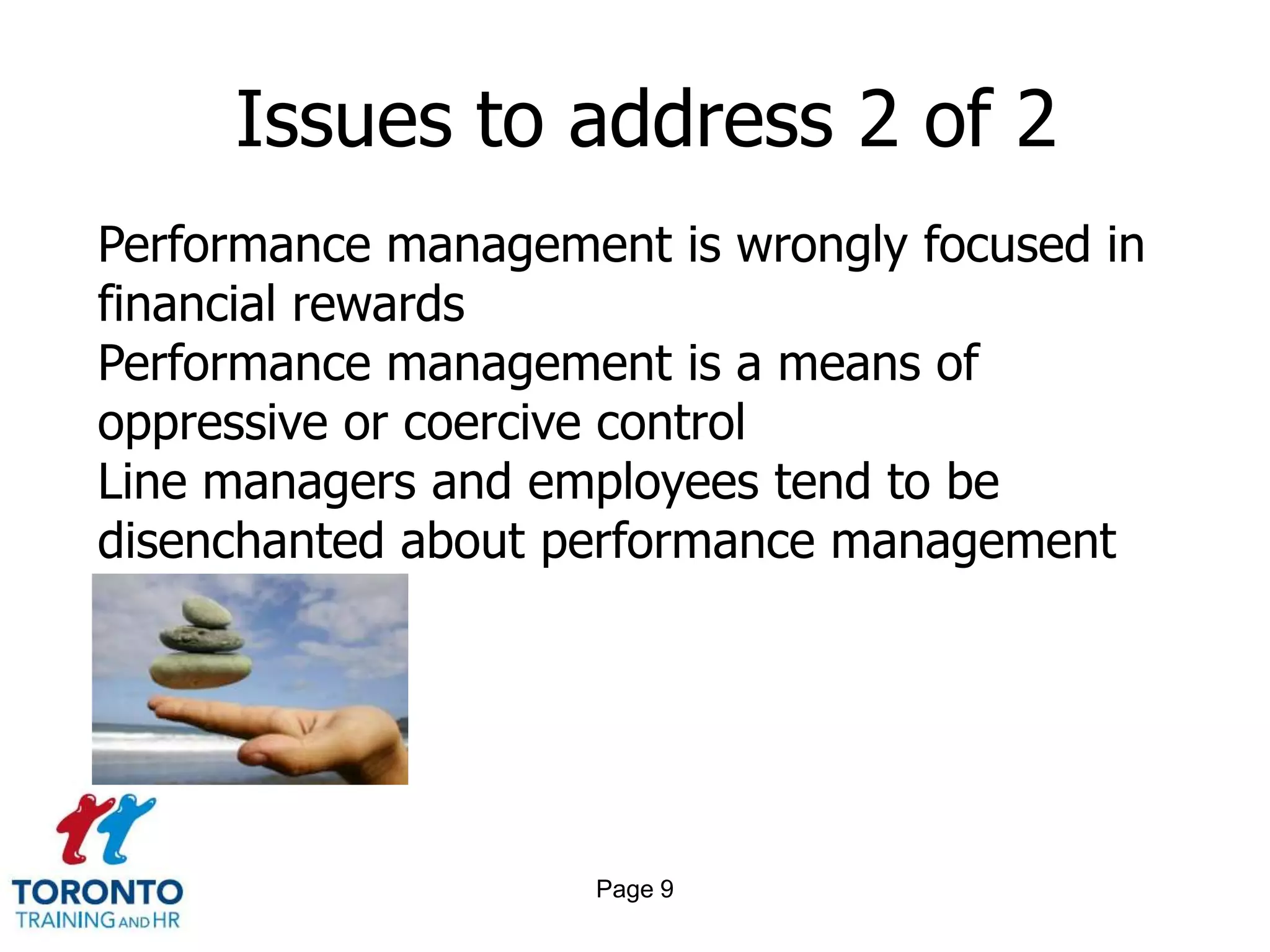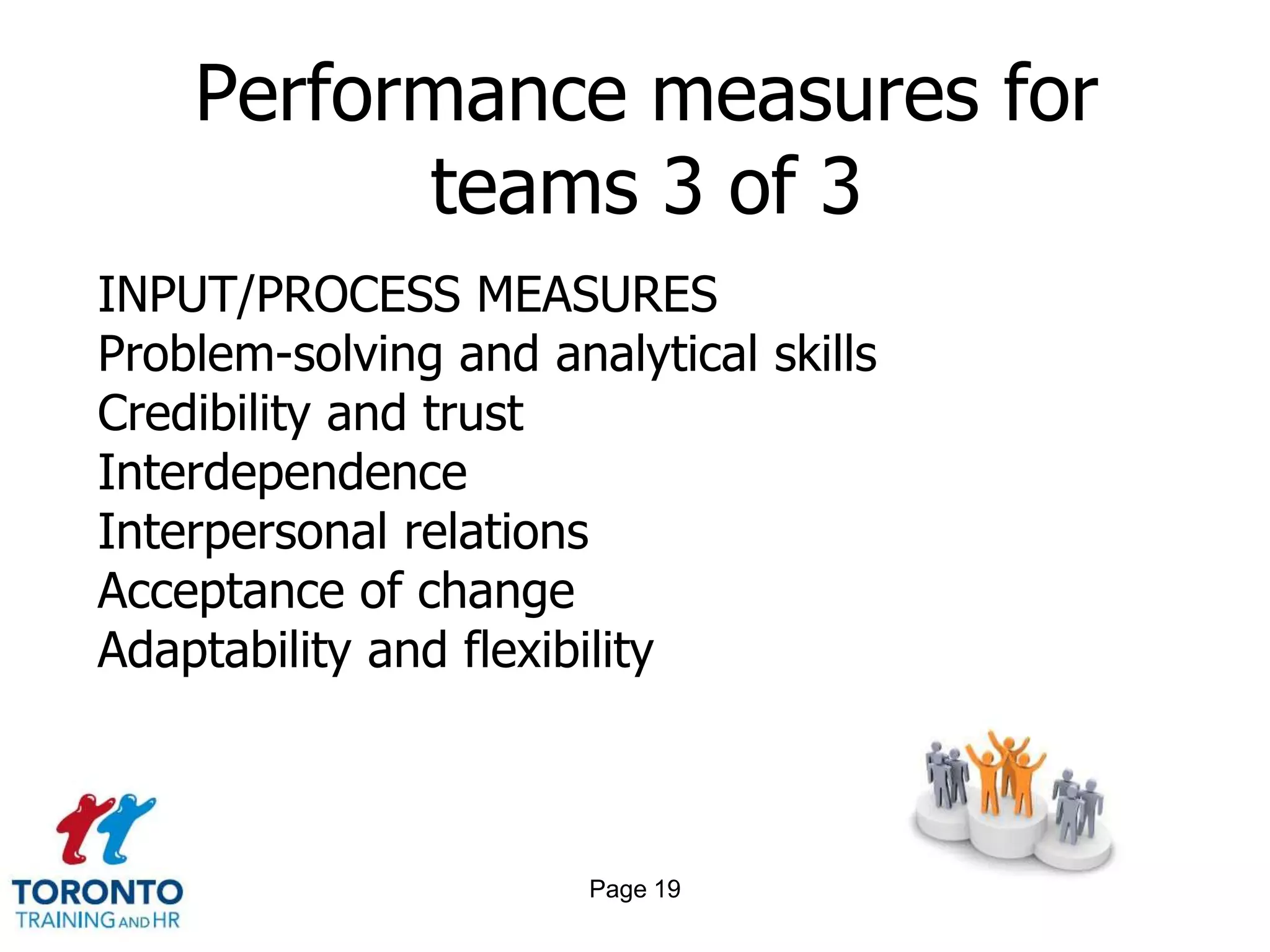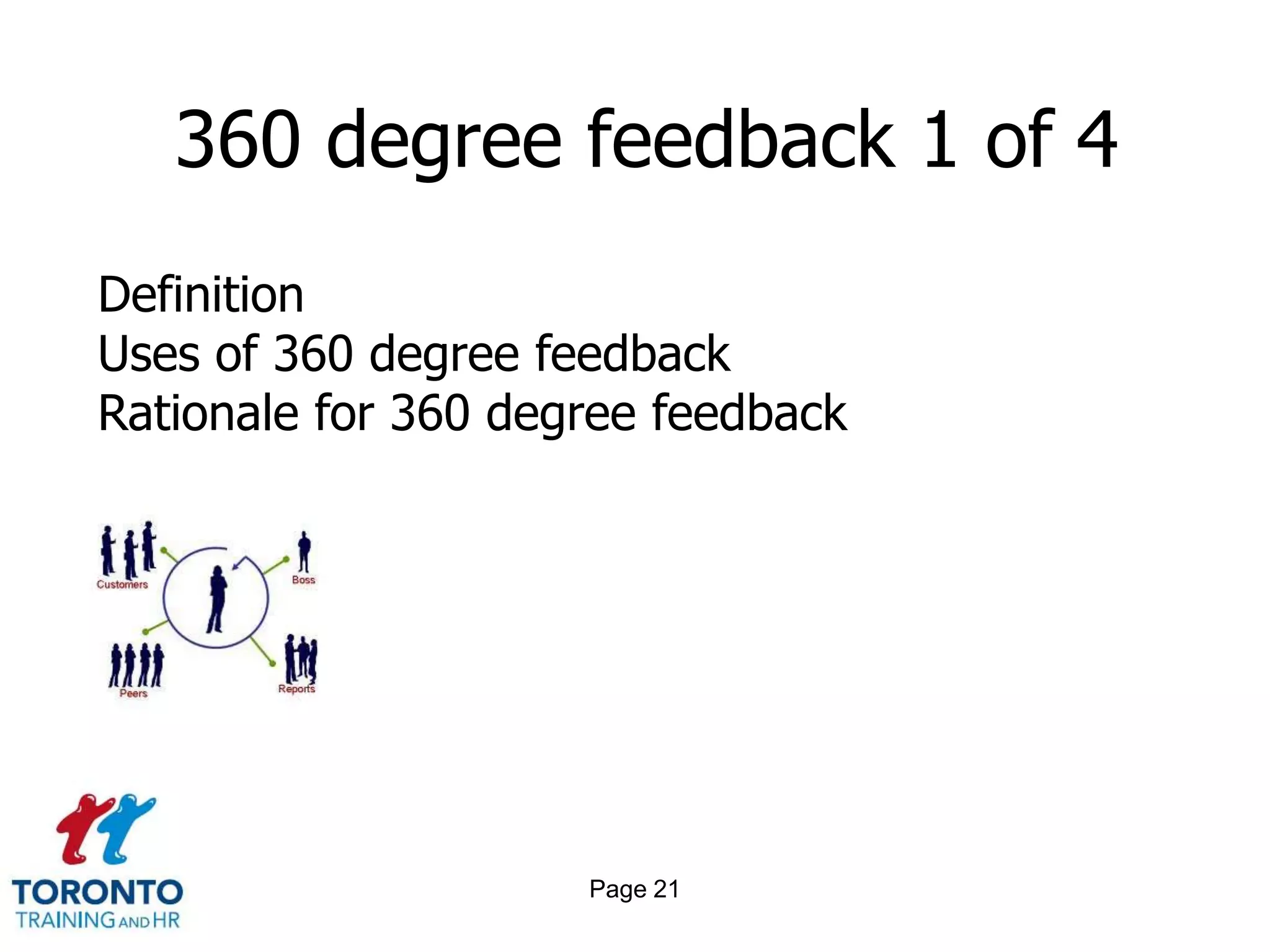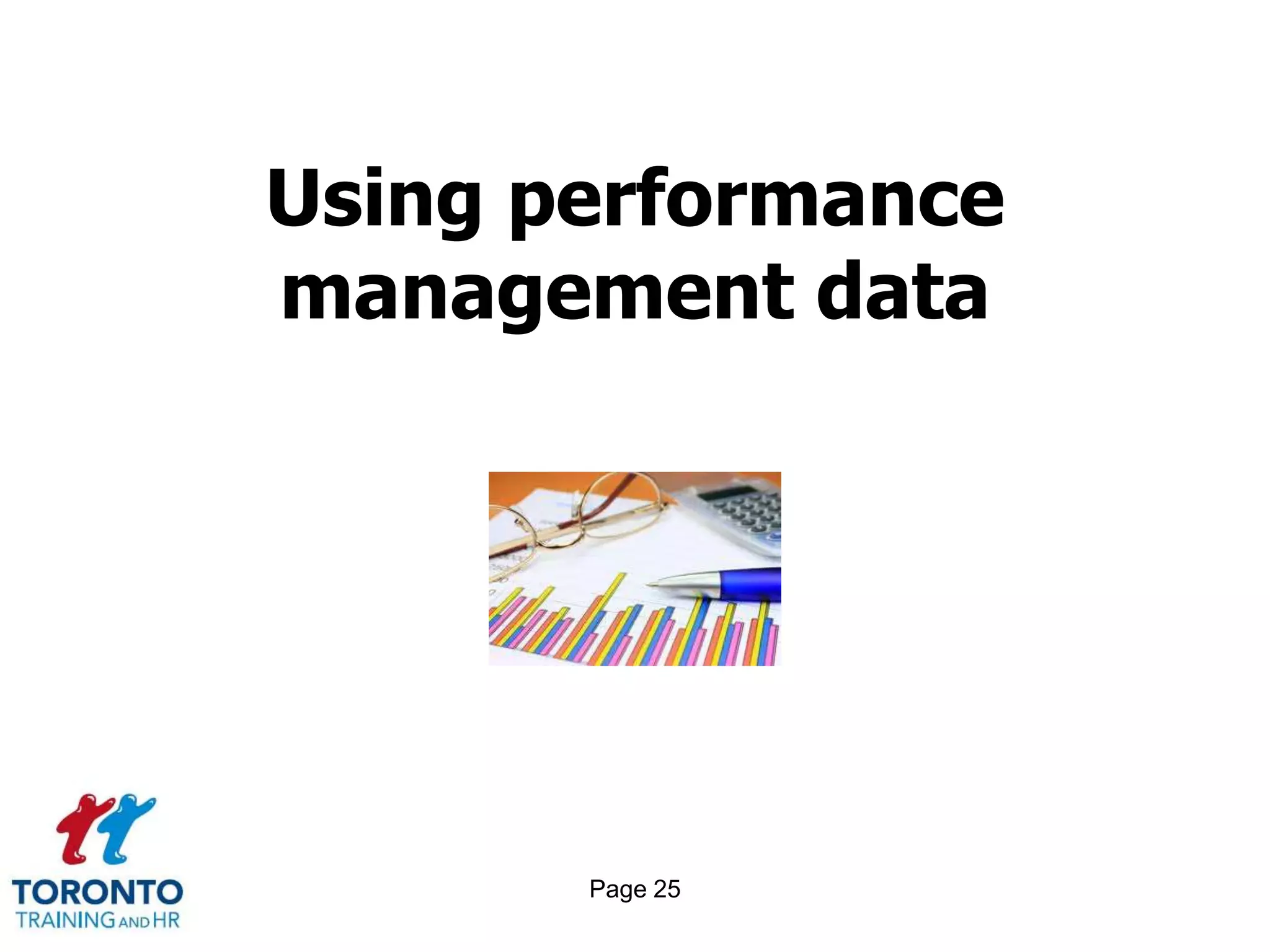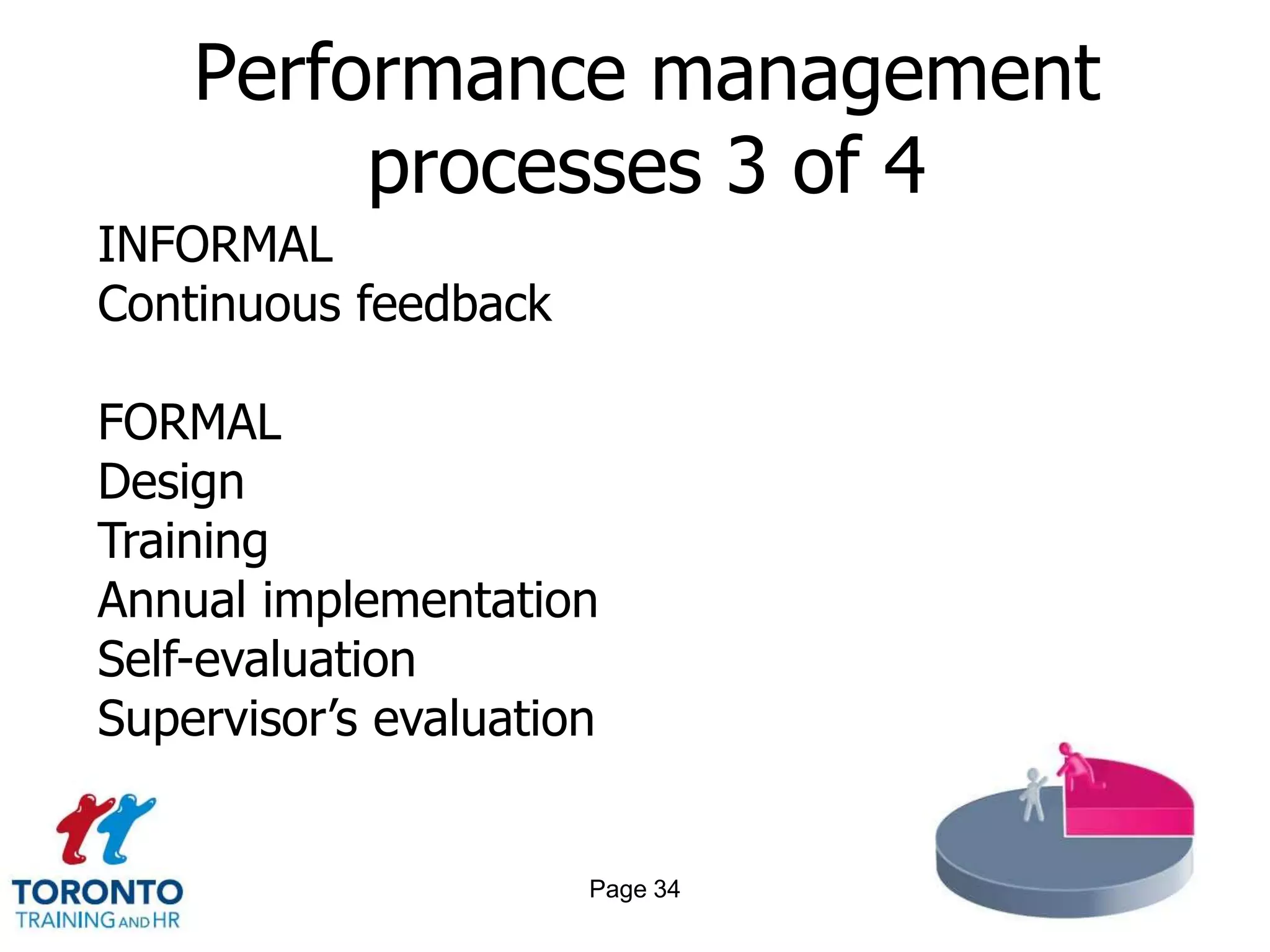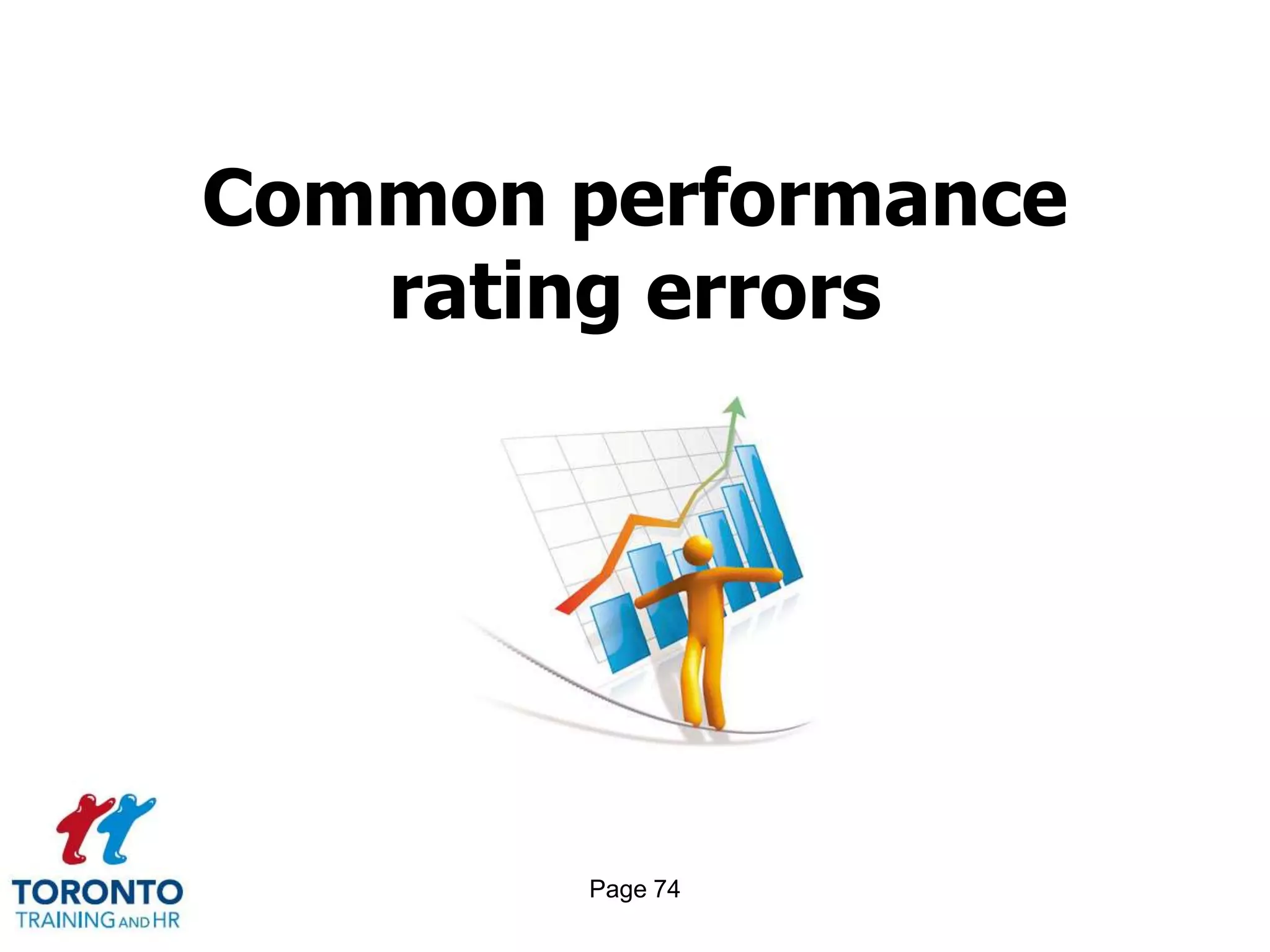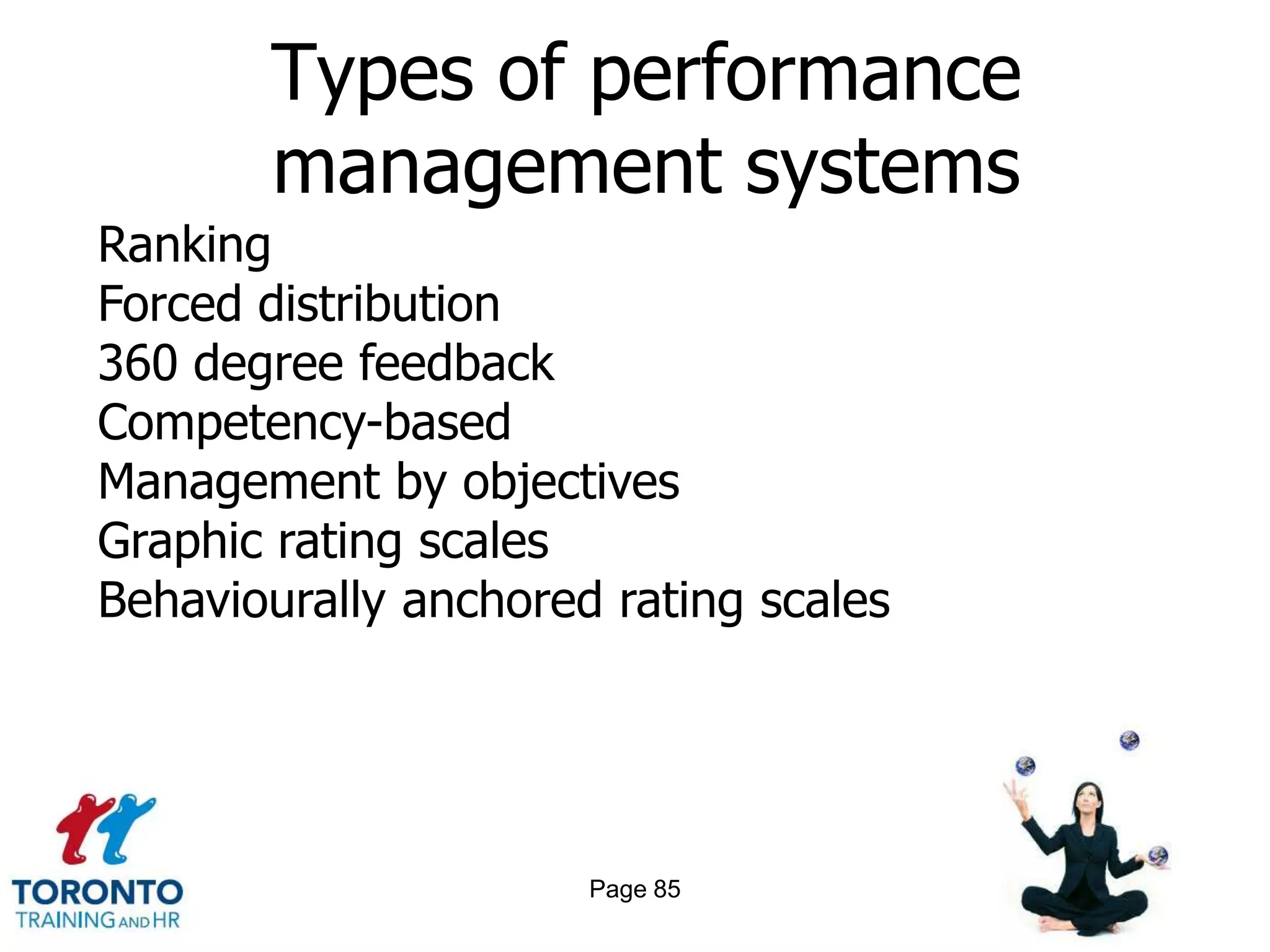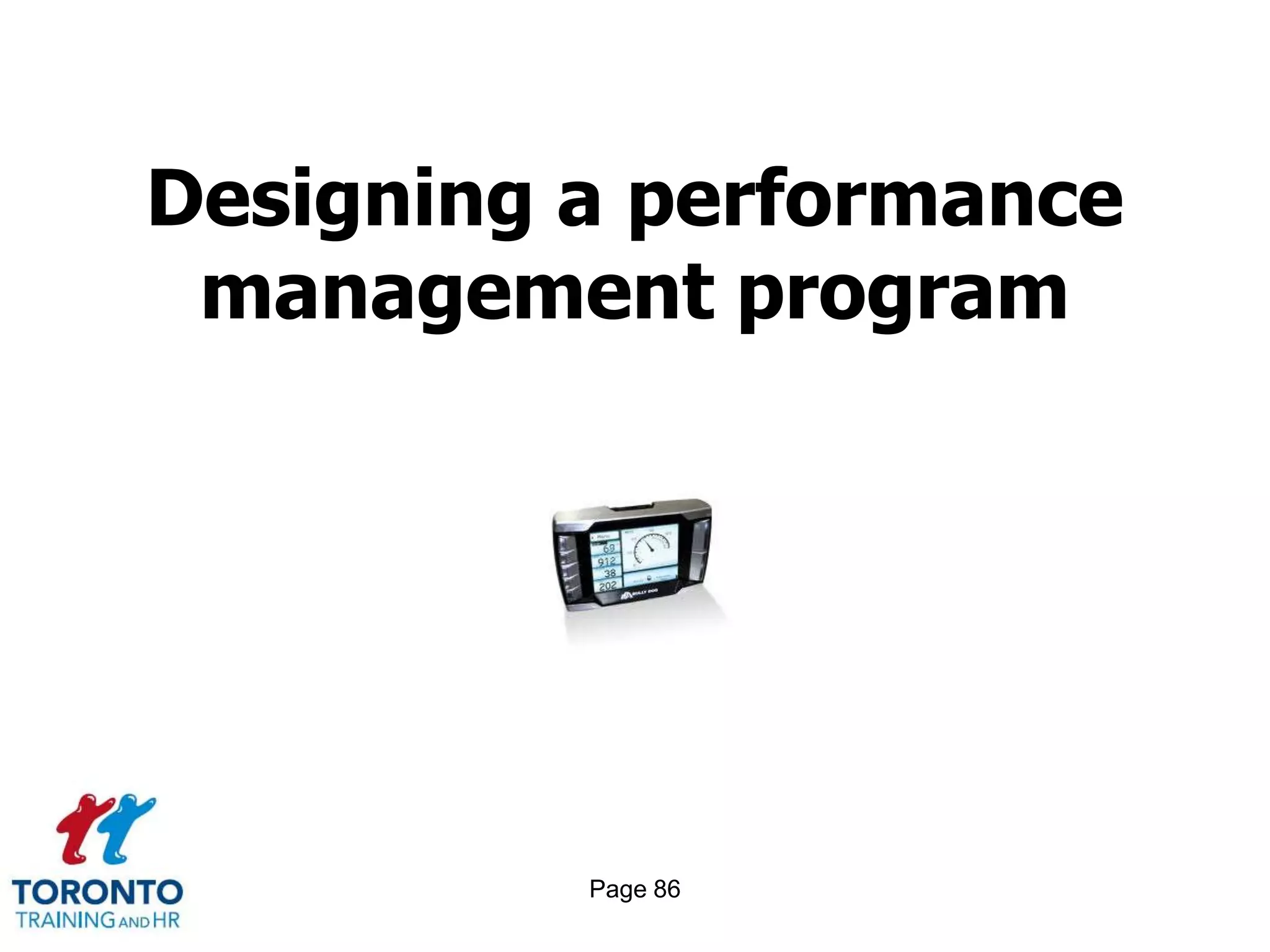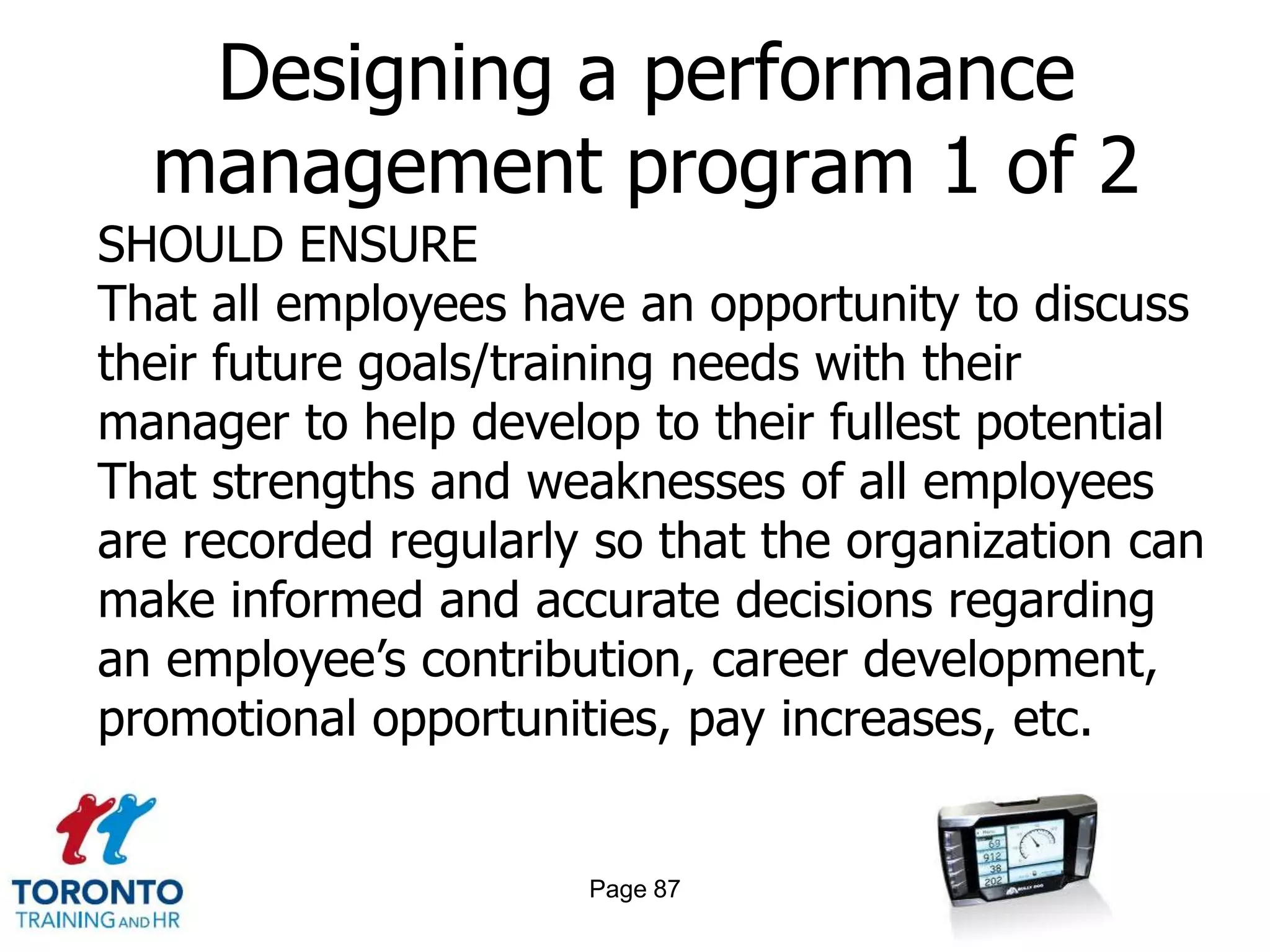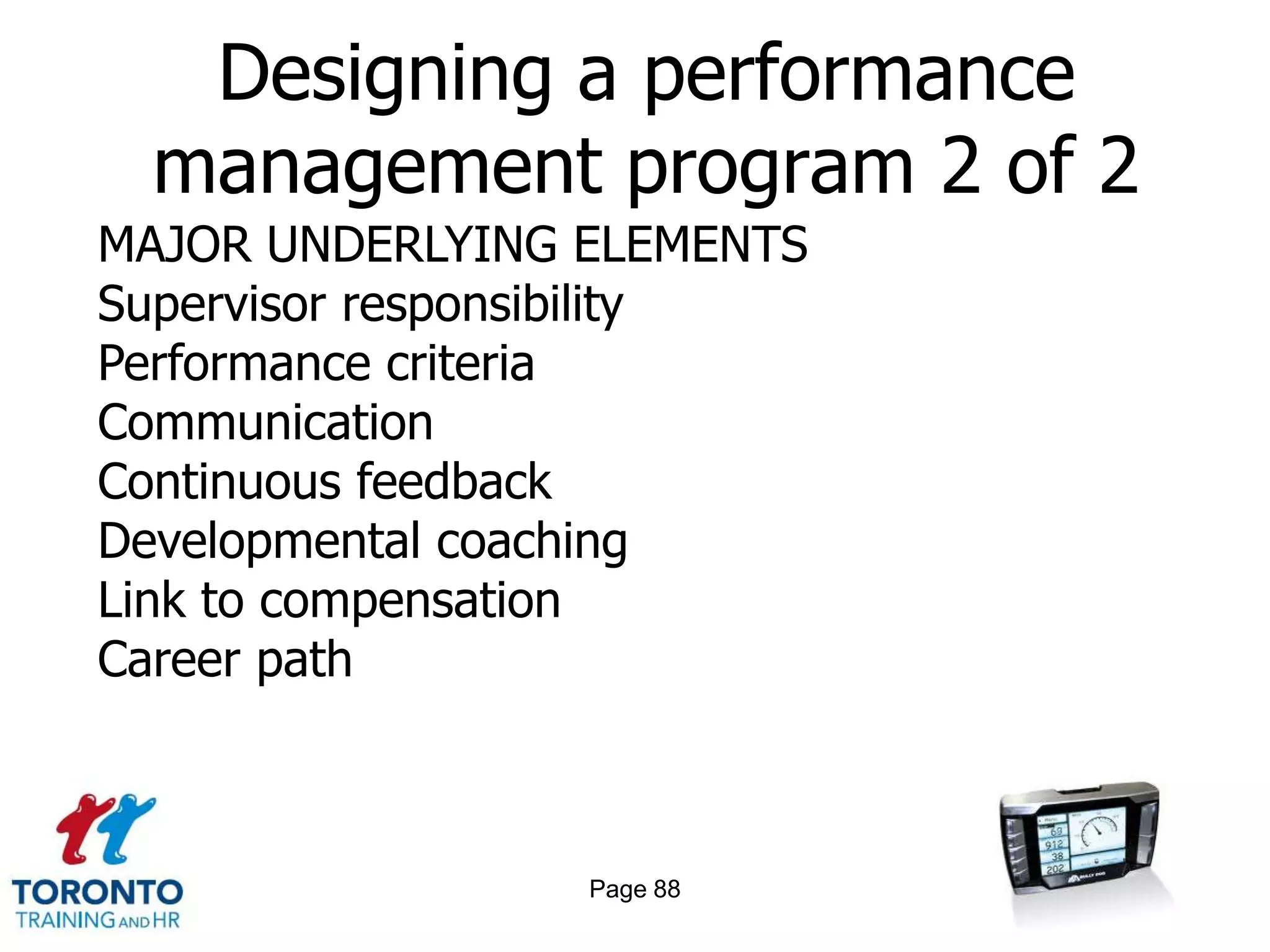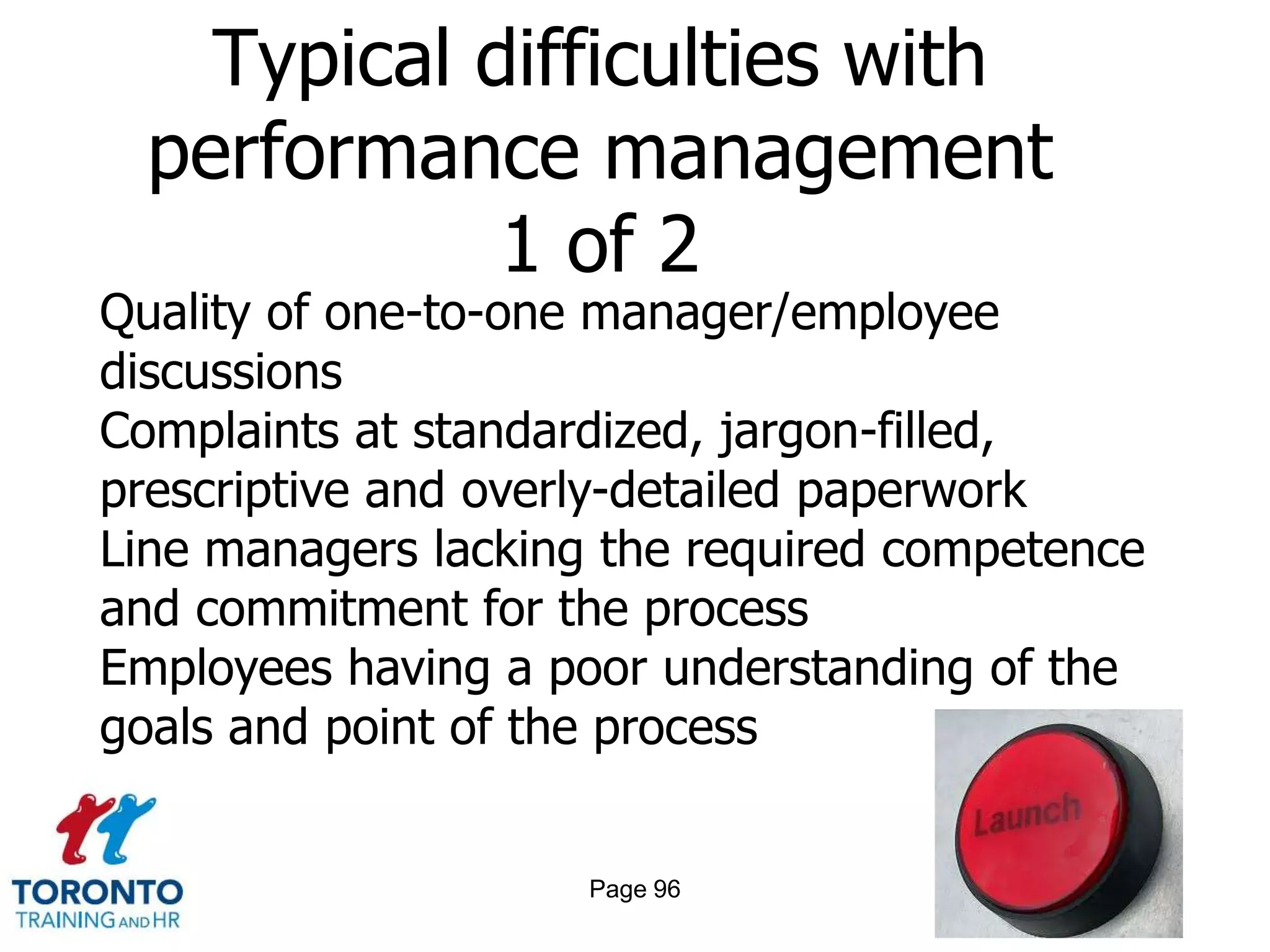This document discusses key aspects of performance management. It addresses issues that can arise, defines high performance, and describes learning opportunities and performance measures for teams. It also covers topics like 360 degree feedback, using performance management data, balanced scorecards, and performance management processes. Principles of performance management are outlined, emphasizing continuous feedback and measuring performance against agreed upon goals. The overall purpose is to help translate organizational goals into individual and team objectives to improve performance over time.








